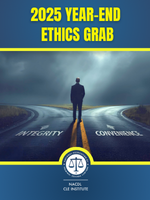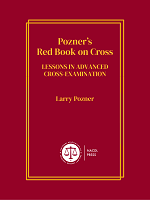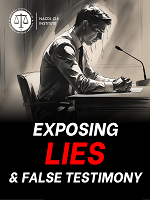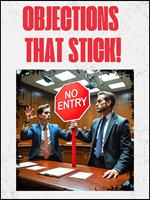Access to The Champion archive is one of many exclusive member benefits. It’s normally restricted to just NACDL members. However, this content, and others like it, is available to everyone in order to educate the public on why criminal justice reform is a necessity.
Editor’s Note: This article is based upon Colin Starger’s prior work on the evolution of Brady doctrine. See Colin Starger, Expanding Stare Decisis: The Role of Precedent in the Unfolding Dialectic of Brady v. Maryland, 46 Loy. L.A. L. Rev. 77 (2012).
In marking the 50th anniversary of Brady v. Maryland, a fitting way to appreciate the historic significance of Justice Douglas’ opinion for the Court is to turn back the pages another 50 years. Brady’s profound contribution to the criminal justice system becomes apparent by considering the impoverished state of the Supreme Court’s due process doctrine as it stood a century ago. In the 50 years that led up to Brady, the Court confronted a series of racially and politically charged cases that forced constitutional soul searching about due process in the face of rank injustice. The story of the Court’s fractious opinions in these dramatic cases — Frank v. Magnum, Moore v. Dempsey, and Mooney v. Holohan — is thus the story of what made Brady’s soaring vision of justice and fairness both possible and necessary.
Frank v. Magnum
This constitutional tale begins with an awful crime committed exactly one hundred years ago in Atlanta, Georgia.1 On April 27, 1913, a night watchman in the National Pencil Factory discovered the corpse of a factory employee named Mary Phagan. Only 13 years old, Phagan had been brutally raped and murdered. The understandable public horror surrounding this crime turned ugly after police arrested Leo M. Frank, the plant’s superintendant and part owner. Critically, Frank was a Jew and Phagan a Christian. In the months leading up to Frank’s trial, sensational newspaper coverage fanned anti-Semitic flames and caused tumult across the South.
Frank always proclaimed his innocence. However, Frank’s trial was conducted under a real threat of mob violence. A demonstrative crowd filled the courtroom each day. During closing arguments, thousands more nosily gathered outside the courtroom. Newspaper editors warned the trial judge that this mob could erupt if the jury acquitted Frank. The National Guard was called in and the judge openly discussed security arrangements with Guard’s commander within sight of the jury. In this tense atmosphere, the jury unsurprisingly found Frank guilty. The day after the jury’s verdict, the judge secretly convened the parties to avoid further rousing the public. He sentenced Frank to hang until dead.
Frank’s defense team unsuccessfully sought a new trial and then appellate relief in the Georgia courts. Rebuffed by state courts, Frank then petitioned for a federal writ of habeas corpus in the Northern District of Georgia. Upon denial, Frank turned at last to the U.S. Supreme Court. Before the Court, Frank’s argument focused on the mob domination of his trial, which he alleged had denied him due process of law within the meaning of the 14th Amendment. On April 19, 1915 — just shy of two years after Phagan’s murder — the Court decided Frank v. Magnum.2 A seven-justice majority ruled against Frank and let his death sentence stand.
Justice Pitney wrote the majority opinion. His legal analysis fairly set out the then-current state of due process doctrine. Citing prior due process case law, Pitney wrote:
a criminal prosecution in the courts of a state … conducted according to the settled course of judicial proceedings as established by the law of the state, so long as it includes notice and an opportunity to be heard, before a court of competent jurisdiction, according to the established modes of procedure, is “due process” in the constitutional sense.3
Under this “notice and opportunity to be heard” conception, Pitney reasoned that Frank had received due process.
The nub of Pitney’s argument turned on the fact that Frank’s mob domination claims had been heard and rejected by the appellate and supreme court in Georgia. “These proceedings,” wrote Pitney, “are to be regarded as part of the process of law under which he is held in custody by the state.”4 Since the Georgia appellate courts had conducted their subsequent review of Frank’s case “under circumstances wholly apart from the atmosphere of the trial, and free from any suggestion of mob domination” before affirming the verdict, Pitney concluded Frank had received constitutional due process.5 To hold otherwise, Pitney warned, would improperly make due process doctrine “impair the power of the states to repress and punish crime.”6
Justice Oliver Wendell Holmes dissented and was joined by future Chief Justice Charles Evans Hughes. Holmes’ powerful dissent would soon help expand due process doctrine beyond the narrow “notice and opportunity to be heard” conception embraced by Pitney and the Court majority. Relying on his own considerable authority rather than any prior case law, Holmes wrote:
Whatever disagreement there may be as to the scope of the phrase “due process of law,” there can be no doubt that it embraces the fundamental conception of a fair trial. … Mob law does not become due process of law by securing the assent of a terrorized jury. We are not speaking of mere disorder, or mere irregularities in procedure, but a case where the processes of justice are actually subverted.7
Holmes thus advocated looking beyond the formal adequacy of state corrective procedures and independently assessing whether substantive justice had been done. “This is not a matter for polite presumptions,” warned Holmes. “We must look facts in the face.”8
When Holmes looked facts in the face, he noted that “[a]ny judge who has sat with juries knows that, in spite of forms, they are extremely likely to be impregnated by the environing atmosphere.” Holmes concluded that Frank’s allegations supported the conclusion that the jury responded to the passions of the mob, which meant that the district court should have heard Frank’s petition. Closing in strong moral language, Holmes declared it “our duty … to declare lynch law as little valid when practised [sic] by a regularly drawn jury as when administered by one elected by a mob intent on death.”9
Though Holmes failed to persuade the majority in Frank v. Magnum, his dissent presciently apprehended the reality of mob violence and lynch law. After losing in the Supreme Court, Frank’s lawyers managed to persuade Georgia’s governor to commute Frank’s death sentence to life.10 Outraged anti-Semitic mobs subsequently exploded into violence around the state. A month later, a party led by eminent citizens abducted Frank from jail and then lynched him in Mary Phagan’s hometown.11
The horror of this injustice is compounded by the fact that Leo Frank was almost certainly innocent. Seventy years after his lynching, the Georgia Board of Pardons and Paroles granted him a posthumous pardon.12 The tragic Frank affair had many consequences. The bitter anti-Semitism it provoked led to an unwelcome revival of the Ku Klux Klan in the South. More positively, Frank case’s also inspired the founding of Anti-Defamation League of B’nai B’rith in 1913.13 And most importantly for this constitutional story, the Court’s failure to provide Leo Frank justice helped push due process doctrine in a bold new direction.
Moore v. Dempsey
Eight years after Frank v. Magnum, the Supreme Court confronted another case of mob justice in Moore v. Dempsey.14 This time the violence arose out of a massive race riot that occurred in 1919 in Philips County, Arkansas.15 The bloody riot lasted days. Rampaging whites killed between 200 and 250 African-Americans before federal troops restored order. Four whites were also killed in the violence. In the aftermath, a series of grand jury indictments and hasty trials resulted in 79 convictions of black men for the murder of the four whites. (Of course, no whites were even indicted for murder.) Twelve men received death sentences.
After a complicated path through Arkansas and federal courts, seven African-American defendants all convicted of murdering the same man — Clinton Lee — ended up in a consolidated habeas corpus appeal before the Court in Moore.16 Similar to Frank, the Moore defendants argued that they had been “hurried to conviction under the pressure of a mob without any regard for their rights and without according them due process of law.”17 And as in Frank, the state authorities responded that the trials had followed the letter of the law and that state appellate processes had found no problem. This time, however, the state’s argument failed. This time, Justice Holmes wrote the seven-justice majority opinion and concluded that defendants’ allegations of mob violence and intimidation stated a valid due process claim.18
To support the proposition that mob domination contradicts due process, Holmes cited no cases at all except for Frank. Specifically, Holmes seized upon begrudging dicta from Pitney’s prior majority opinion that suggested a trial dominated by a mob would violate due process if it caused an “actual interference with the course of justice.”19 This questionable invocation of Frank incensed Justice McReynolds. In a scathing dissent, McReynolds accused the Moore majority of putting the real Frank doctrine aside and adopting “the views expressed by the minority of the court in that cause.”20 To back up his claim, McReynolds quoted seven complete paragraphs from Frank, which put Pitney’s mob-domination quote in its original context.21
In truth, McReynolds accurately captured Holmes’ fast-and-loose approach to precedent in Moore. Though he technically quoted the Frank majority, Holmes’ constitutional reasoning clearly followed his prior dissent. Holmes once again viewed due process as demanding an inquiry into the ends of justice rather than a polite review of its means:
[I]f it is the case that the whole proceeding is a mask — that counsel, jury, and judge were swept to the fatal end by an irresistible wave of public passion, and that State Courts failed to correct the wrong, neither perfection in the machinery for correction nor the possibility that the trial court and counsel saw no other way of avoiding an immediate outbreak of the mob can prevent this Court from securing to the petitioners their constitutional rights.22
On the other hand, McReynolds’ dissent in Moore faithfully echoed the central themes of the Frank majority — the importance of deferring to state criminal processes, confidence in the integrity of state-court review, and a general suspicion of defendants’ claims.
It should come as no surprise that Justice Holmes did not let the existence of impoverished due process precedent stand in the way of his broader constitutional vision. After all, Holmes had already penned that most famous aphorism critiquing slavish adherence to precedent: “It is revolting to have no better reason for a rule of law than that so it was laid down in the time of Henry IV.”23 Holmes’ new doctrinal approach also made good sense given the Frank debacle and the contemporary realities of endemic racism and unchecked lynching. What’s more, Holmes’ ruling directly helped the cause of justice on the ground. Two years after Moore, the men (wrongly) convicted of killing Clinton Lee were all freed by a gubernatorial order.24
In terms of due process doctrine then, it is fair to say that Moore effectively overruled Frank sub silentio. Moore showed that a trial dominated by a mob contravened due process even if the state provided a formal corrective process complete with notice and opportunity to be heard. Form alone was not enough to guarantee substantive fairness. After Moore, the question became just how far this new thinking would go.
The answer to that question is that Holmes’ new thinking ultimately led to Brady and the recognition of a defendant’s right to discover exculpatory evidence. However, before the Court was able to take that momentous step, due process doctrine first had to expand to prohibit state subornation of perjury. This expansion occurred as a result of the most prominent single doctrinal ancestor of Brady v. Maryland — the Court’s unanimous 1935 per curiam opinion in Mooney v. Holohan.25
Mooney v. Holohan
Rather than race or religion, Mooney saw the Court confront a national controversy involving political dissent. Tom Mooney was arrested in 1916 on a mass-murder charge arising out of the bombing of a pro-war rally in San Francisco that had killed nine people.26 A militant-left labor radical, Mooney had previously earned the ire of local authorities — as well as that of the union-busting Pinkerton detective agency — on account of his connection to a strike against a California utility company that had seen anonymous radicals blow-up sections of the utility’s power lines. Mooney twice faced charges of possessing explosives and twice was acquitted at trial. At the time of the San Francisco bombing, Mooney remained an outspoken industrial unionist personally associated with famous anti-war anarchists such as Alexander Berkman and Emma Goldman. He was the perfect patsy for a set-up.
The team prosecuting Mooney for capital murder “put its evidence together out of not much more than thin air.”27 The jury heard testimony, in all likelihood false and perjured, placing Mooney at the scene of the grisly crime.28 Faced with this testimony, the jury found Mooney guilty and he was sentenced to die. Yet after his conviction, the case against Mooney began to unravel. Evidence emerged that supported suspicions about systematic perjury. Mooney’s case soon became an international cause célèbre for the radical left. After decades of mass demonstrations and protracted court battles, California Gov. Cuthbert Olson finally granted Mooney a full pardon on innocence grounds in 1939.29
The Supreme Court’s 1935 opinion in Mooney came four years before Tom Mooney’s exoneration and actually played a very minor role in his decades-long odyssey to prove his innocence. Strictly speaking, Mooney lost before the Court because the opinion denied leave to file a habeas petition and directed Mooney to return to the California courts.30 Nonetheless, the Mooney opinion had enormous constitutional significance as it both advanced the new robust version of due process doctrine and publically rejected arguments of the California Attorney General seeking to resurrect the earlier, more impoverished, vision of the 14th Amendment.
Mooney’s basic argument to the Court was that the state’s procurement and use of perjured testimony had violated his due process rights. In his responsive brief, the California AG countered that the “function of the prosecuting attorney is to prosecute, to act as an accuser, to be a partisan, to present the evidence on one side of the case.”31 Due process, the AG reasoned, only demanded an “impartial [court] between accuser and accused” and could never be violated by a conviction obtained through perjury unless “the trial judge or trial jurors were parties to the alleged fraud.”32 Relying on pre-Moore case law, the AG asserted that due process doctrine only required the defendant to be given “notice and the opportunity to be heard.”33 Since Mooney had received such notice and opportunity in state courts, the AG characterized his quest for due process relief as unsupported by precedent.
Thankfully, the Court was not persuaded. After summarizing the AG’s due process arguments, the Supreme Court’s per curiam opinion bluntly rejected them: “we are unable to approve of this narrow view of the requirement of due process.”34 The requirement of due process, the Court wrote:
cannot be deemed to be satisfied by mere notice and hearing if a state has contrived a conviction through the pretense of a trial which in truth is but used as a means of depriving a defendant through a deliberate deception of court and jury by the presentation of testimony known to be perjured. Such a contrivance by a state to procure the conviction and imprisonment of a defendant is as inconsistent with the rudimentary demands of justice as is the obtaining of a like result by intimidation.35
As authority for its substantive conception of due process, the Court cited Frank and Moore.36 However, the Mooney court did not quote any specific rule from Frank or Moore and apply it to the case before it. Rather, it analogized to mob intimidation and the “rudimentary demands of justice.”
Mooney’s short and sweet analysis had profound implications. Its due process principle effectively authorized federal review of the good faith of state prosecuting attorneys. When prosecutors acted in bad faith by suborning perjury, they reduced procedural protections to an empty form. Notice and hearing alone cannot deliver justice. Mooney’s direct concern with substantive justice consolidated the robust understanding of due process advanced by Holmes in his Frank dissent and Moore majority. Mooney also spawned a series of cases building upon its logic.37 Brady v. Maryland is the crowning achievement in this series.
Brady v. Maryland
Decided on May 13, 1963, the Brady Court announced its decision in a six-justice majority opinion authored by Justice Douglas. Recounting the details of the fascinating case is unnecessary at this juncture as they are ably presented elsewhere in this anniversary issue of The Champion. For present purposes, it suffices to note that before stating the holding of his opinion, Douglas clearly acknowledged its doctrinal ancestry: “This ruling is an extension of Mooney.”38 Then followed the now legendary words:
We now hold that the suppression by the prosecution of evidence favorable to an accused upon request violates due process where the evidence is material to either guilt or to punishment, irrespective of the good or bad faith of the prosecution.39
This rule — finally providing discovery to defendants in criminal cases — was the culmination of a half-century of doctrinal evolution forged in the fires of three cases of religious, racial, and political injustice.
Without question, doctrinal purists could assail Douglas’ assertion that Brady was a simple extension of Mooney. After all, it is quite a leap to infer an affirmative duty to disclose exculpatory evidence from a case that imposed a negative prohibition on suborning perjury. It similarly stretches analogy to find a constitutional basis for regulating discovery from cases that erected due-process protections against mob justice. In short, it is a radical move to find precedent for the irrespective-of-good-or-bad-faith command of Brady in the tied-to-bad-faith history of its ancestral cases discussed in this article.
William Douglas, however, rejected such a timid view of constitutional precedent. Like Holmes before him, Douglas could not brook blind adherence to the past when it impeded necessary change for the present. Indeed, 14 years before he wrote Brady, Douglas had proclaimed in a law review article that “[s]o far as constitutional law is concerned, stare decisis must give way before the dynamic component of history.”40 Ultimately, it is this “dynamic component of history” that justifies Douglas’ new due process rule in Brady.
By 1963, America looked very different from the way it had looked 50 years earlier. After its historic mistake in Frank, the Court could not simply turn a blind eye to the existence of criminal injustices rooted in religious, racial, or political prejudice. Of course, the Court’s opinions never spoke directly about such prejudices. Doctrinal etiquette usually prevents Supreme Court justices from suggesting that judges or juries could ever be bigoted or unfair. And yet, as Moore and Mooney demonstrated, the Court progressively expanded due process doctrine to deal with such ugly realities. By the time of Brady, due process doctrine had forward momentum driven by concern for substantive justice.
Fifty years later, the criminal justice system suffers its own ugly realities. We could use some Brady momentum.
Notes
- For an excellent and thorough discussion of the facts of Frank’s case, see Eric M. Freedman, Milestones in Habeas Corpus: Part II Leo Frank Lives: Untangling the Historical Roots of Meaningful Federal Habeas Corpus Review of State Convictions, 51 Ala. L. Rev. 1467 (2000).
- Frank v. Magnum, 237 U.S. 309 (1915).
- Id. at 326 (collecting cases).
- Id. at 327.
- Id. at 333, 338.
- Id. at 337.
- Id. at 347 (Holmes, J., dissenting).
- Id. at 349 (Holmes, J., dissenting).
- Id. at 350 (Holmes, J., dissenting).
- Freedman, supra note 1, at 1495-96.
- Id. at 1497.
- See Georgia Pardons Victim 70 Years after Lynching, N.Y. Times, March 12, 1986, at A16. The only uncertainty about Frank’s innocence derives from the fact that there is no 100 percent conclusive evidence of innocence such as a DNA test.
- See id. at 1.
- Moore v. Dempsey, 261 U.S. 86 (1923).
- See generally Freedman, supra note 1 at 1502-04 (analyzing different historical accounts of the violence). As Professor Freedman explains, the cause of the riot is disputed, but modern scholarship supports the view that the cause of the violence was an effort by whites to revenge and deter legal attacks on an entrenched system of peonage.
- Id. at 1505-1521 (detailing procedural history of two sets of defendants (Ware and Moore)).
- Moore, 261 U.S. at 87.
- Id. at 91-92.
- Id. at 91 (quoting Frank, 237 U.S. at 335).
- Id. at 93 (McReynolds, J., dissenting).
- Id. at 94-96 (McReynolds, J., dissenting) (quoting Frank en bloc).
- Id. at 91.
- Oliver Wendell Holmes, Jr., The Path of the Law, 10 Harv. L. Rev. 457, 469 (1897).
- See Freedman, supra note 1, at 1530, n.246.
- Mooney v. Holohan, 294 U.S. 103 (1935).
- For a wonderful account of the Mooney case and its lessons for lawyering, see Rebecca Roiphe, Lawyering at the Extremes: The Representation of Tom Mooney, 1916-1939, 77 Fordham L. Rev. 1731, 1731 (2009).
- Id. at 1738.
- Id. at 1740-44 (discussing evidence).
- Id. at 1759.
- See Mooney, 294 U.S. at 115.
- See Return to the Order to Show Cause Why Leave to File Petition for Writ of Habeas Corpus Should Not Be Granted, Filed Dec. 20, 1934 (“Mooney AG’s Brief” — on file with author) at 20.
- Id. at 21.
- Id. at 4 (collecting cases).
- Mooney, 294 U.S. at 112.
- Id.
- Id. at 113 (citing Frank, 237 U.S. at 335; Moore, 261 U.S. at 91).
- See Pyle v. Kansas, 317 U.S. 213 (1942); Napue v. Illinois, 360 U.S. 264 (1959).
- Brady v. Maryland, 373 U.S. 83, 86 (1963).
- Id. at 87.
- William O. Douglas, Stare Decisis, 49 Colum. L. Rev. 735, 737 (1949).













